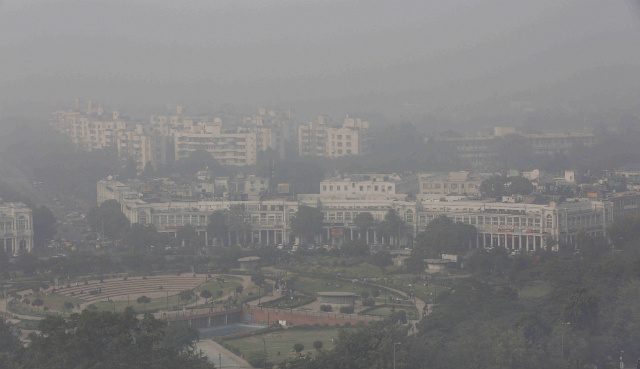SUMMARY
This is AI generated summarization, which may have errors. For context, always refer to the full article.

NEW DELHI, India (UPDATED) – More than a million private cars were banned from New Delhi’s roads on Friday, January 1, as authorities began trialling drastic new measures to cut smog in the world’s most polluted capital.
From January 1 only cars with odd-numbered license plates will be allowed on the roads on odd-numbered dates and those with even-numbered plates on the other days, except on Sundays when the rule does not apply.
The restrictions will run until January 15 on a trial basis as part of a wider drive aimed at reducing pollution levels that also includes shutting some coal-fired power plants and vacuuming roads to reduce dust.
Early Friday as Delhi residents took the roads, volunteers and traffic police were seen fanning out across the central part of the city.
On one of the city’s main arterial roads, most cars trickling in bore odd-numbered license plates while scores of cyclists wore fluorescent gear, their faces covered.
“Traffic definitely looks thinner today than most days. But I don’t know if that’s because of the odd-even rule or because people partied too much last night,” 58-year-old Mohammad Shahid, a civil defense volunteer, told Agence France-Presse while standing at one of Delhi’s busiest intersections.
Critics have warned the plan could fail in a city where traffic rules are already routinely flouted, with even the federal environment minister calling the move “crazy”.
Many believe Delhi residents will deploy the famed Indian skill of “jugaad” – creating a cheap alternative solution – by forging number plates or buying second cars.
But traffic policemen Friday were happy and surprised to find Delhiites obeying the rules.
“I would have expected to catch at least dozens in the first half an hour but surprisingly most people are obeying,” Ankit Kumar, a senior traffic policeman, said.
“At least over here which is usually a pretty hectic intersection. This is a good sign. But let’s see what happens on Monday (when more commuters hit the roads),” he added.
One of the first violators of the new rule at the busy stretch was fined 2,000 rupees ($30) – steep for the average Delhiite – for driving a car with an even-numbered license plate.
Police asked him to turn around and go back home.
‘Important for health’
The Delhi government says the car restrictions could be introduced on a more permanent basis if successful, with Chief Minister Arvind Kejriwal promising that he and his ministers would car-pool.
“This plan will only be successful when it becomes a very big movement, when people will want to obey it from their heart,” he has said previously, urging Delhiites to cooperate.
“Don’t do it because Kejriwal says so, don’t do it because the government is forcing you. Do it because you feel it is important for your life, your health.”
But some have expressed scepticism about the scheme given the large number of exemptions, which range from motorcycles to women driving alone. Campaigners say motorbikes create up to 31 percent of total vehicular pollution.
Kejriwal’s government announced the measures early December, responding to public pressure to tackle pollution levels more than 10 times the World Health Organization’s safe limits.
A 2014 WHO survey of more than 1,600 cities ranked Delhi as the most polluted, partly because of the 8.5 million vehicles on its roads. Just under three million of these are private cars or vans, and another 1,400 are added every day. (READ: Delhi says air ‘not as bad’ as Beijing after smog scrutiny)
The city has been shrouded in a toxic blanket of smog in recent weeks as winter sets in and cooler temperatures trap pollutants in the atmosphere, pushing harmful PM 2.5 levels sky-high.
These fine particles less than 2.5 micrometres in diameter are linked to higher rates of chronic bronchitis, lung cancer and heart disease after settling into lungs and passing into the bloodstream.
Delhi’s government has hired 3,000 private buses to provide shuttle services into the city from residential areas to cope with the extra ridership during the trial.
Schools have been ordered to remain closed until the trial ends so that their buses can be pressed into action. – Annie Banerji, AFP/Rappler.com
Add a comment
How does this make you feel?
There are no comments yet. Add your comment to start the conversation.